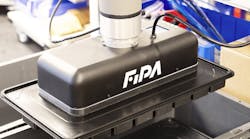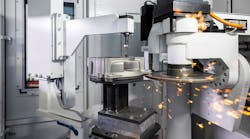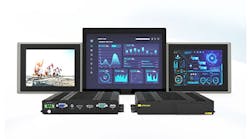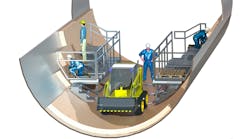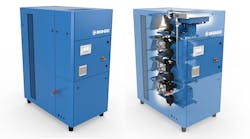FLOW SCIENCE INC. released a high-performance computing version of its computational fluid dynamics software, Flow-3D/MP v6, fully synch’ed with the latest developments in Flow-3D version 11, including the addition of Flow Science’s state-of-the-art postprocessor, FlowSight™.
Flow-3D/MP v6.0 has the same physical models, features, and graphical user interface as Flow-3D v11.
The developer indicated it has started shipping the new release to Flow-3D/MP customers under maintenance contracts.
New features in Flow-3D v11 and available in Flow-3D/MP v6.0 include: multi-block gridding with nested, linked, partially overlapping and conforming mesh blocks; mesh quality checking; and import/export finite element meshes via Exodus-II file format.
Performance improvements — including both increased speed for simulations and a decreased use of memory — have been achieved using automatic domain decomposition, dynamic thread balancing, improved memory management, optimized MPI communication and hybrid MPI-OpenMP technology.
For especially large simulations, a decrease of 20-24% in memory usage and speed-up of 30-40% has been shown in a typical metal casting simulation from the previous version of Flow-3D/MP.
Flow-3D/MP offers multiple standard functions for metalcasting processes, including thermal stress and deformations; iron solidification; sand core blowing; sand core drying; permeable molds; solidification and melting; solidification shrinkage with interdendritic feeding; micro and macro porosity; binary alloy segregation; thermal die cycling; surface oxide defects; cavitation potential; lost-foam casting; semi-solid material; core gas generation; back pressure and vents; shot sleeves; air entrainment; temperature-dependent material properties; and cooling channels.
“Flow Science has long recognized the competitive advantage HPC-enabled tools such as Flow-3D/MP provides to our customers. Flow-3D/MP gives our users the ability to study more design alternatives in a shorter amount of time than ever before, pushing product performance to new heights,” stated v.p.-engineering John Ditter.
A new remote solving capability allows MP customers to submit their simulations to a remote cluster using client-server technology. This added functionality will allow customers to easily access all of their available hardware resources and manage their simulations in a straightforward and productive way.
Flow Science Inc. develops transient, free-surface CFD flow modeling software for industrial and scientific applications worldwide.
Visit www.flow3d.com
